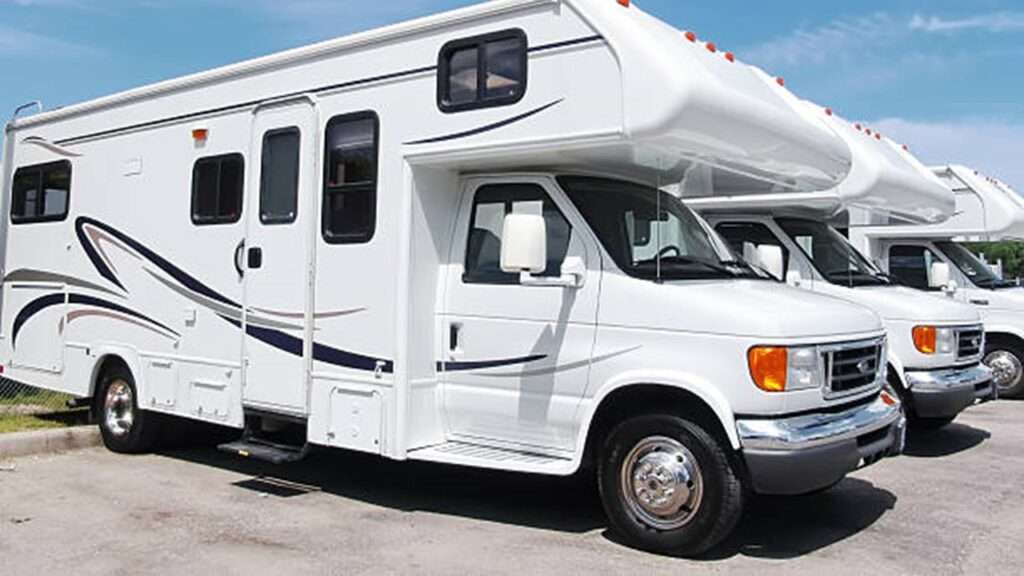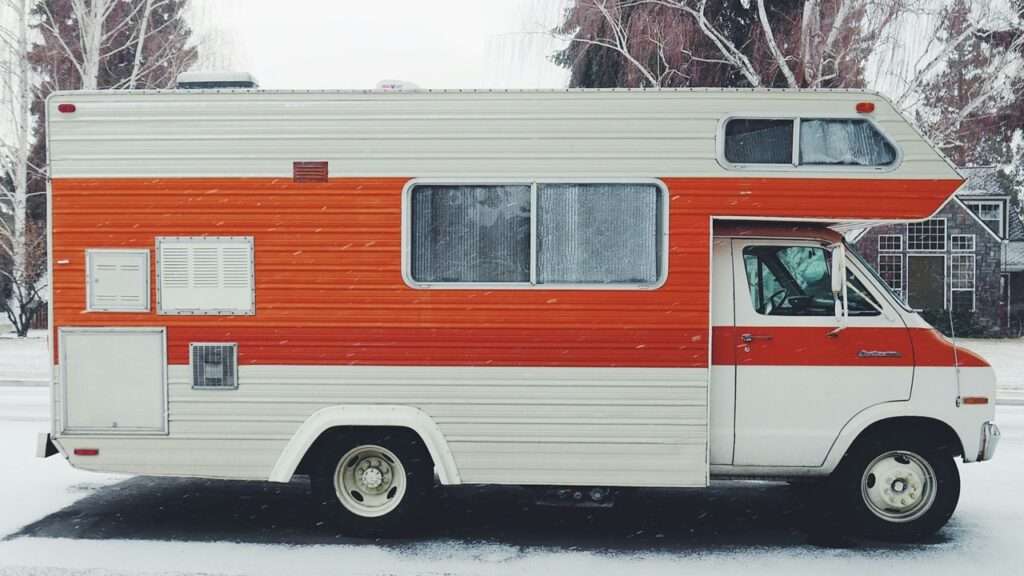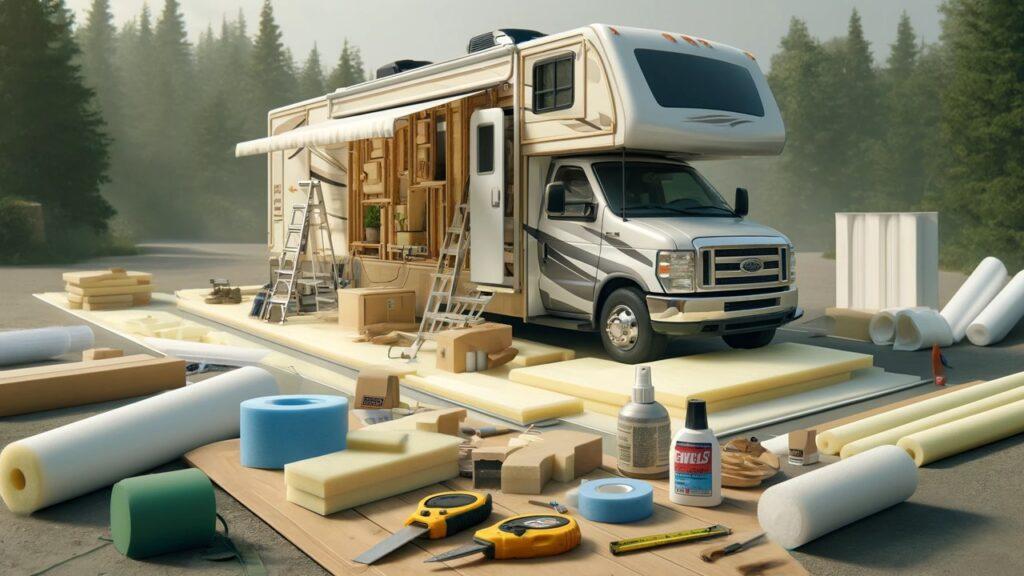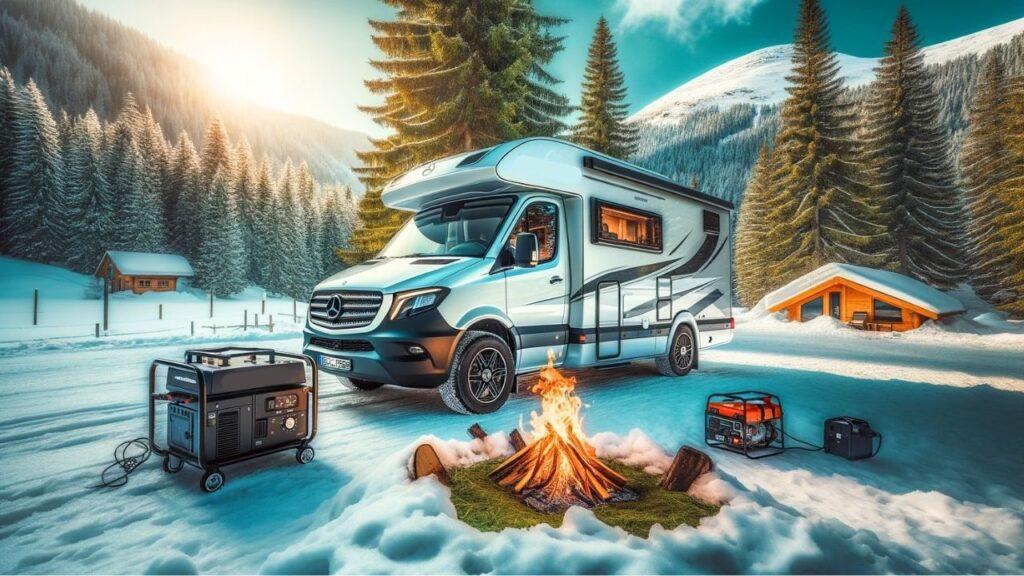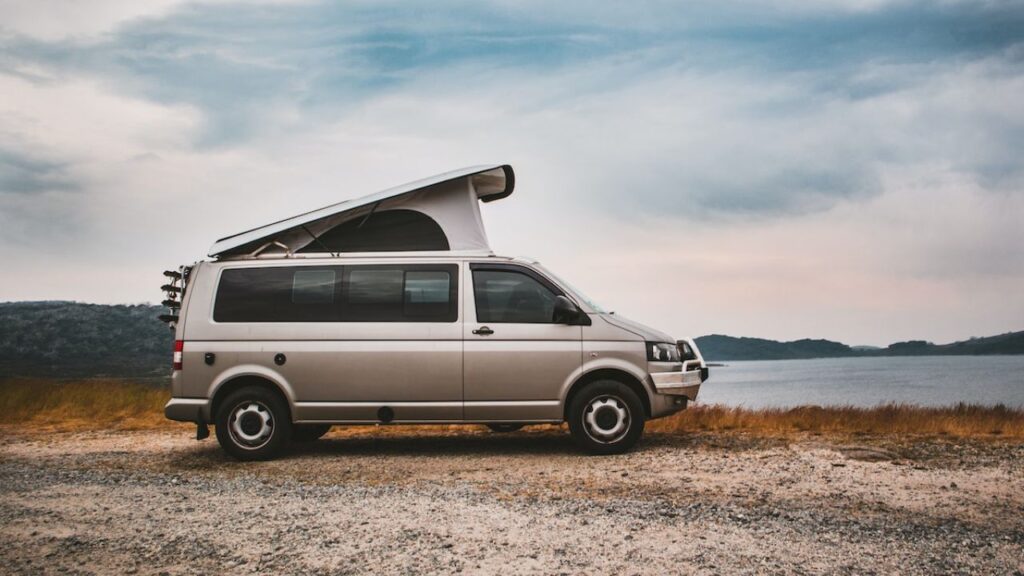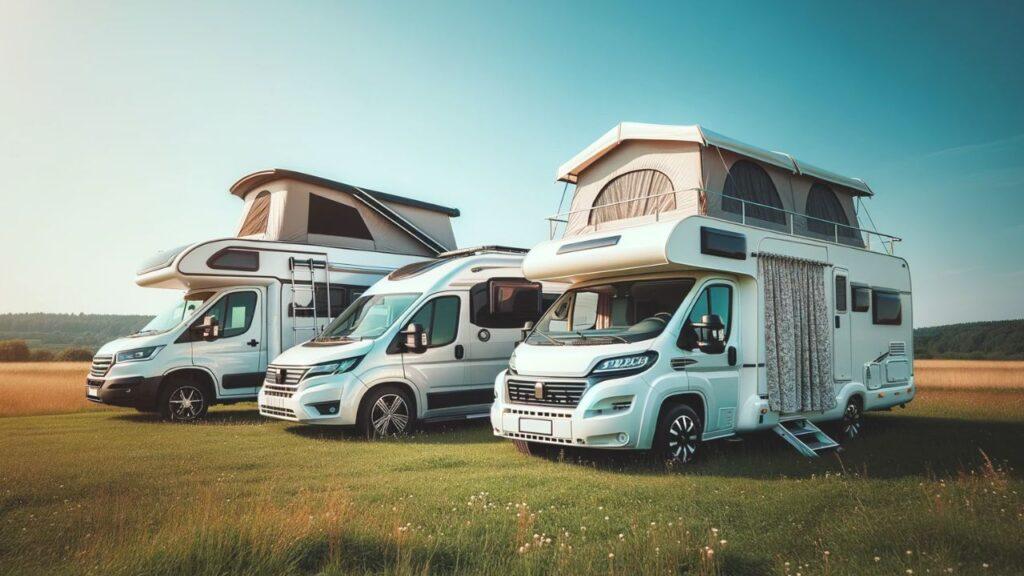Running out of propane in the middle of a trip is never fun. The best RV propane tanks provide reliable fuel storage for cooking, heating, and powering appliances on the road. Available in sizes like 20, 30, and 40 lbs, these DOT-approved tanks are built for safe transport and easy refilling. In this guide, we review and rank top-rated propane tanks for RVs based on capacity, build quality, valve type, and user convenience.
We’re reader-supported. When you buy through links on our site, we may earn an affiliate commission. As an Amazon Associate, we earn from qualifying purchases, at no extra cost to you.
Best RV Propane Tanks for Van Life: Our Top 7 Picks
- Best Overall Option: Flame King YSN-301
- Budget-Friendly Option: FLAME KING YSN5LB
- Value Option: Flame King YSN201HZL
- Lightweight Option: Ignik Refillable Gas Growler X
- High-Capacity Option: Flame King YSNR501
- Horizontally Placeable Option: Flame King YSN122
- Overflow Protection Option: Flame King YSN10LB
1. Best Overall Option: Flame King YSN-301

Quick Specifications
- Material: Durable Steel
- Weight: 24.4 pounds
- Brand: Flame King
- Dimensions: 12 x 12 x 24 inches
- Connection Type: Standard Flange
In our journey exploring various propane tanks, the Flame King YSN-301 has consistently proven itself. Its solid steel build and thoughtful safety features, like the OPD (overfilling prevention device) valve, offer peace of mind. This is especially important for us RVers who rely heavily on propane for various needs.
The capacity of the Flame King YSN-301 is a great fit for those longer trips where refueling isn’t always convenient. Its standard-size connection valve eases compatibility worries, fitting well with a range of RV models and propane-powered accessories.
Pros
- Ready for immediate use, eliminating the need for pre-purging.
- Durable construction, offering longevity and value for money.
- Includes an OPD valve, aligning with safety regulations.
- Suitable for a range of uses, from heating to cooking in RVs.
Cons
- At 24.4 pounds, its weight may be a consideration for some users.
- The size can be a bit bulky for smaller RV storage compartments.
The Flame King YSN-301 isn’t just another propane tank; it’s a robust, safe, and versatile choice for RV enthusiasts. The tank’s features, including its pre-purged state, high-grade steel, and compliance with DOT and Transport Canada standards, make it a reliable choice. Whether you’re on a cross-country journey or a weekend getaway, opting for this tank means choosing a dependable and secure energy solution for your RV, which, in our experience, is incredibly valuable.
2. Budget-Friendly Option: FLAME KING YSN5LB

Quick Specifications
- Brand: Flame King
- Material: Steel, Powder-Coated Finish
- Weight: 5 Pounds
- Dimensions: 13.35″D x 9.29″W x 9.17″H
- Connection Type: OPD Valve with Standard Propane Fitting
- Special Features: Lightweight, Built-in Gauge, Portable Design
Alright, let’s talk about the Flame King YSN5LB. If you’re looking for something small, portable, and easy to manage, this one makes a lot of sense. It’s a 5-pound propane tank, which means it’s not going to power your RV for weeks, but for things like camping, grilling, or short outdoor trips, it does the job well. It’s also pretty easy to carry around because of its size, so if you’re someone who doesn’t want to lug around a heavy tank, this could be a good fit.
One thing that stands out is the built-in OPD valve (basically, a safety feature that stops you from overfilling it). That’s something you want, especially if you’re new to handling propane tanks. It’s also DOT and Transport Canada certified, so it meets the safety standards for traveling in both the US and Canada. Plus, the powder-coated steel finish helps keep rust away, which is a nice touch if you’re using it outdoors a lot.
Pros
- Lightweight and compact, making it easy to carry and store
- Durable steel build with a rust-resistant powder-coated finish
- OPD valve prevents overfilling, adding an extra safety layer
- Versatile use – works with grills, heaters, and camp stoves
Cons
- Limited propane capacity, so you may need to refill often for long trips
- Might need an adapter to connect to certain appliances
In our opinion, if you need a small and easy-to-handle propane tank for camping, grilling, or quick weekend getaways, this one makes sense. It’s light, safe, and well-built, and you won’t have to worry about rust or overfilling. It’s not for heavy propane users, but for casual use, it’s a solid, reliable option that won’t take up much space.
3. Value Option: Flame King YSN201HZL
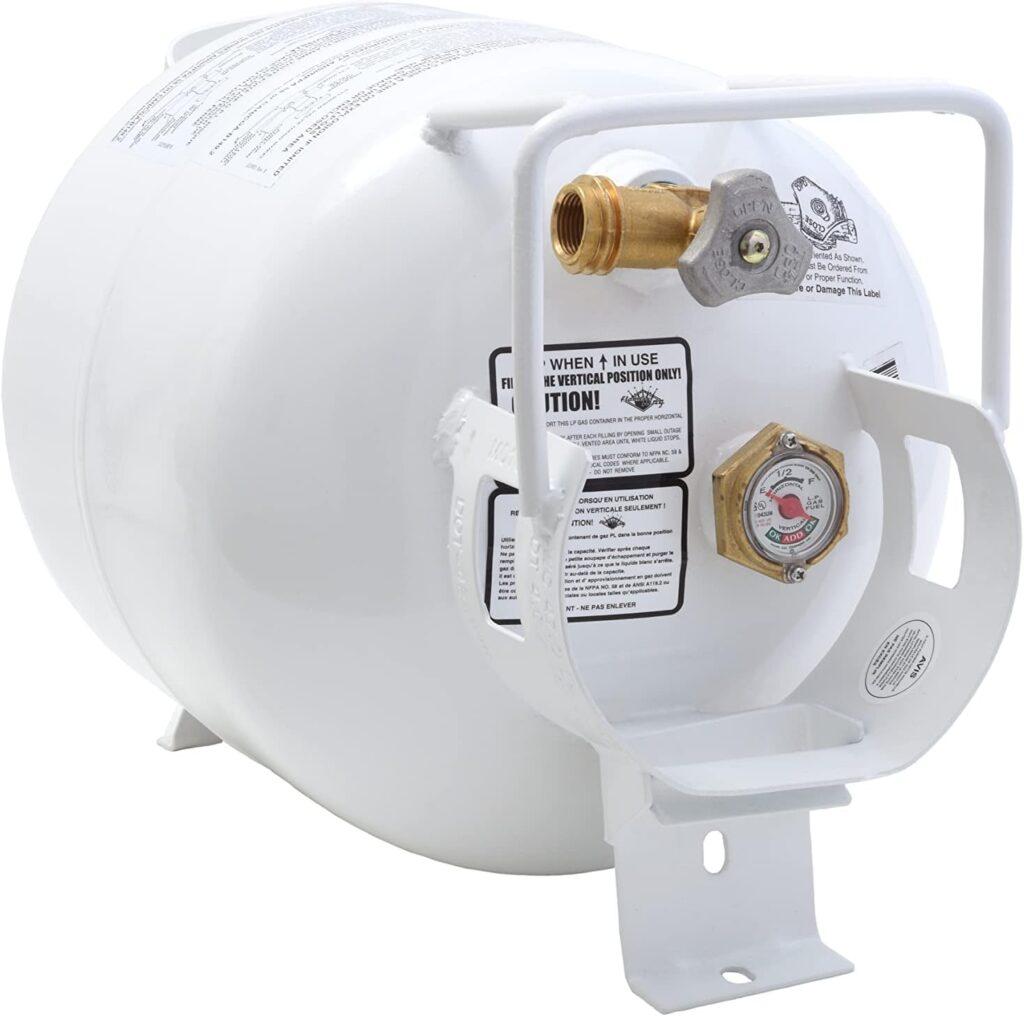
Quick Specifications
- Dimensions: 17 x 13 x 12 inches
- Weight: 20.7 pounds
- Manufacturer: Flame King
- Special Feature: Horizontal Design
When we stumbled upon the Flame King YSN201HZL, it was a revelation in terms of value and functionality. This 20-pound steel propane tank, with its unique horizontal layout, offers a stable and versatile solution for various RV needs. Its lower profile design is not just a visual treat but also practical for RVs, patios, and outdoor activities.
The tank’s built-in gauge is a standout feature, offering a clear view of propane levels and eliminating guesswork. Furthermore, the EZ-HANDLE collar design, free from sharp edges, makes moving and installing this tank an effortless task.
Pros
- Horizontal design provides stability and fits well in various settings.
- Accurate built-in gauge helps monitor propane levels easily.
- EZ-HANDLE collar design for safe and easy transportation.
- Durably constructed with high-grade steel and rust-resistant coating.
Cons
- The horizontal shape may take up more horizontal space.
- Slightly heavier than some vertical tanks, but still manageable.
The Flame King YSN201HZL is more than just a propane tank; it’s a reliable companion for RV enthusiasts. Its thoughtful design and built-in features make it a practical choice for a range of uses, from powering barbeques to heating RV interiors. Its certification for safety standards adds to its value, ensuring a worry-free experience. For those who seek functionality, safety, and value in one package, this propane tank is a top choice.
4. Lightweight Option: Ignik Refillable Gas Growler X

Quick Specifications
- Dimensions: 19.2 x 10.2 x 10 inches
- Weight: 7.46 Kilograms (16.5 pounds empty)
- Brand: Ignik
- Material: Polypropylene
- Capacity: 10-pound (2.5-gallon)
In the quest for the lightweight RV propane tank led us to the Ignik Gas Growler X. This refillable 10-pound tank is a breath of fresh air for RVers who prioritize portability without sacrificing capacity. Its compact size coupled with a practical carrying case makes it an ideal companion for longer trips where space and weight are considerations.
Moreover, the Ignik Gas Growler X stands out for its eco-friendly approach. It offers a sustainable alternative to single-use propane bottles, something we, as conscious travelers, appreciate. The versatility of its adapter hose, fitting a range of devices, adds to its appeal as a must-have for any RV adventure.
Pros
- Lightweight and portable, ideal for space-conscious RVers.
- Economical and eco-friendly, reducing waste with refillable design.
- Versatile adapter hose connects to various propane-burning devices.
- Rugged, insulated carrying case for easy transport and protection.
Cons
- The 10-pound capacity may require more frequent refills on very long trips.
- The white color of the tank might require more frequent cleaning.
The Ignik Gas Growler X offers a perfect balance of convenience, environmental responsibility, and versatility. It’s an ideal choice for those who need a compact yet efficient propane solution. This tank is not just a tool; it’s a step towards sustainable RV travel, making it an invaluable asset for modern adventurers.
5. High-Capacity Option: Flame King YSNR501
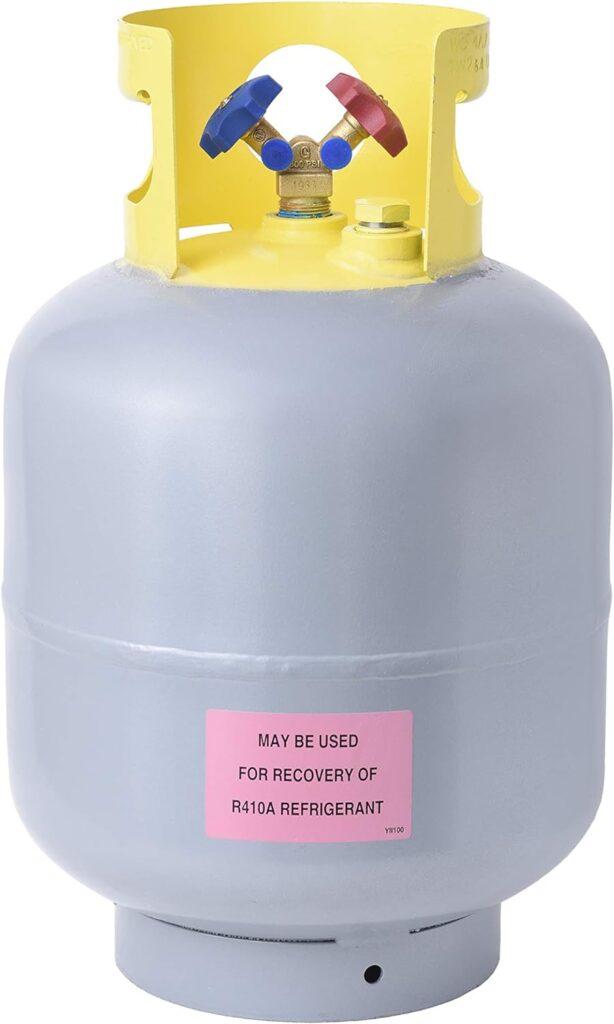
Quick Specifications
- Manufacturer: Flame King
- Model: YSNR501 50 Pound Refrigerant
- Item Weight: 28.9 pounds
- Dimensions: 19.37 x 12.36 x 12.36 inches
- Material: Powder Coated Steel
- Capacity: 50 Pounds
For those of us seeking a propane tank with a substantial capacity, the Flame King YSNR501 stands out. This 50-pound tank is a powerhouse, perfect for extended RV trips where frequent refilling isn’t feasible. Its robust construction and powder-coated finish assure durability and reliability on the road.
Moreover, the thoughtful design, including a Y-valve for liquid and vapor and a 3/4” NPT opening, enhances its utility. The collar design is a nice touch, simplifying handling and transport. RVers who need a dependable and high-capacity propane solution, this tank can be an excellent choice for long-term usage.
Pros
- Large 50-pound capacity caters to extended use without frequent refills.
- Durable construction with a high-gloss along with powder-coated finish.
- Y-valve feature allows for versatility in liquid and vapor usage.
- Ease of handling with a well-designed collar.
Cons
- Its size and weight might be challenging for smaller RVs or limited storage.
- The high capacity might be more than needed for shorter trips.
The Flame King YSNR501 is ideal for those who prioritize capacity and durability in their RV travels. It’s a high-quality, dependable tank that lives up to the Flame King reputation, perfect for long adventures where propane needs are significant. This tank is a reliable companion, ensuring you have enough fuel for all your RV needs.
6. Horizontally Placeable Option: Flame King YSN122

Quick Specifications
- Manufacturer: YSN Imports
- Model: Flame King YSN122
- Dimensions: 12.3 x 15.5 x 28 inches
- Weight: 49 Pounds
- Capacity: 12.2 Gallons
In our quest for a horizontal RV propane tank, we discovered the Flame King YSN122. This 12.2-gallon tank is more than just a storage unit; it’s a reliable energy source for extended RV journeys. Its horizontal layout is particularly appealing, as it slides neatly into the undercarriage of many vehicles, maximizing space efficiency.
The construction of the Flame King YSN122 impressed us with its high-grade steel and sturdy powder coating. It feels robust, a quality we appreciate in our travels. The installed valves and gauge add to its functionality, allowing for easy monitoring and refilling.
Pros
- Ample 12.2-gallon capacity, ideal for long trips without constant refills.
- Sturdy build quality ensures longevity and reliability.
- Horizontal design optimizes space in various vehicle types.
- ASME certification means less worry about re-certification.
Cons
- At 49 pounds, its weight could be a factor for some.
- Its size may require some planning for installation, especially in smaller RVs.
The Flame King YSN122 stands out for its practical design and substantial capacity. It’s a tank that offers peace of mind, knowing you have a reliable propane supply in a form factor that respects space limitations. This tank is more than an accessory; it’s an integral part of your RV’s infrastructure, ensuring you’re always ready for the road ahead.
7. Overflow Protection Option: Flame King YSN10LB

Quick Specifications
- Brand: Flame King
- Material: Steel, Powder-Coated Finish
- Weight: 13.32 Pounds
- Dimensions: 9 x 9 x 17.8 inches
- Connection Type: Type 1 OPD Valve
- Special Features: Overfill Prevention, Rust-Resistant Coating, DOT Approved
When it comes to portable propane tanks, we think the Flame King YSN10LB is a solid choice for those needing something compact yet functional. It’s a 10-pound propane tank, though some may refer to it as 11-pound, but the actual capacity sits around 10.51 pounds. That’s enough fuel for camping, grilling, or heating without being bulky or heavy.
One thing we appreciate is the Overfill Protection Device (OPD) valve, which prevents overfilling and ensures safer propane use. From our standpoint, this is an important feature, especially for those who refill tanks often. The powder-coated steel construction also adds a layer of durability, helping to prevent rust when stored outdoors. Whether you’re using it for a fire pit, a small heater, or an RV setup, it offers a good balance of portability and fuel capacity.
Pros
- Portable size makes it easy to carry for camping and outdoor activities
- OPD valve helps prevent overfilling, improving safety during refills
- Powder-coated steel adds durability and rust protection for long-term use
- DOT approved and tested for safety, making it travel-friendly
Cons
- Slightly heavier compared to some other small propane tanks
- Might require more frequent refills for extended trips
From our perspective, this propane tank is an excellent choice for those needing something compact, safe, and reliable. It holds enough fuel for casual RV trips, weekend camping, or grilling while still being lightweight enough for easy transport. With its overfill protection and sturdy build, it’s a practical option that meets safety standards while keeping things simple.
What Is RV Propane Tank?
When going on RV adventures, understanding the nuances of RV propane tanks is crucial. These tanks are pivotal in powering appliances, heating systems, and cooking facilities within your RV, turning it into a cozy, functional home on wheels. In this detailed guide, we dive into the various aspects of propane tanks used in RVs, focusing on types, capacities, and safety features.
Types of RV Propane Tanks
RV propane tanks come in different types, each catering to specific needs and setups. The most common types are:
- ASME Tanks: These are permanently mounted tanks, typically used in Class A motorhomes. Their installation is fixed, making them a part of the RV’s structure.
- DOT Cylinders: Portable and versatile, these tanks are found in most towable RVs. They can be easily disconnected, refilled, or replaced.
- Horizontal vs. Vertical Tanks: Orientation matters in RVs. Horizontal tanks are suited for external mounting, whereas vertical tanks are ideal for compact spaces.
- Aluminum vs. Steel Tanks: Aluminum tanks are lighter and resistant to corrosion, while steel tanks are more economical and robust.
- Refillable vs. Exchangeable Tanks: Refillable tanks can be topped off at propane filling stations, while exchangeable ones are swapped for full tanks at designated locations.
RV Propane Tank Capacities
The capacity of an RV propane tank determines how long you can go between refills. Common tank sizes include:
- 20-pound Tanks: Ideal for smaller RVs or short trips, these are the most common size for portable needs.
- 30-pound Tanks: Offering more capacity, they are a choice for longer travels or larger consumption needs.
- 40-pound and Larger Tanks: Used in larger RVs, these tanks cater to extensive travel or full-time RV living.
- Built-In Tank Capacities: In Class A motorhomes, built-in tanks can range from 80 to 100 pounds, ensuring a longer supply.
- Measuring Capacity: Understanding how to read tank gauges and the importance of not overfilling is essential.
Safety Features in RV Propane Tanks
Safety is paramount when it comes to dealing with propane tanks in RVs. Modern tanks come equipped with various safety features:
- Overfill Protection Devices (OPDs): These prevent the tank from being filled beyond its safe capacity.
- Pressure Relief Valves: In case of excessive pressure build-up, these valves release propane to prevent tank rupture.
- Automatic Shutoff Valves: These valves cut off the supply in case of a significant leak or drop in pressure.
- Corrosion Resistance: Coatings and materials used in tanks protect against rust and corrosion.
- Certifications and Testing: Tanks adhere to DOT or ASME standards and undergo rigorous testing for safety.
Furthermore, regular inspections, understanding the smell of propane for leak detection, and having proper venting are crucial for safe RVing.
Knowing your RV propane tank’s type, capacity, and safety features is essential for a safe and enjoyable journey. Proper knowledge ensures you select the right tank for your RV, understand refill needs, and maintain safety standards, making your road travels worry-free and delightful.
Do You Need A Propane Tank for Your RV?
Embarking on an RV journey brings the question of whether a propane tank is essential for your travels. In the realm of RVing, propane tanks are not just accessories; they are fundamental components that power a myriad of necessities. Let’s delve into the criteria to assess your RV’s propane needs and explore the substantial benefits these tanks offer.
Assessing Your RV’s Propane Needs
Determining the need for a propane tank in your RV involves a careful consideration of several aspects:
- RV Type Matters: If you’re driving a Class A motorhome, you likely have a built-in tank, but smaller RVs often need portable solutions.
- List Your Propane-Dependent Appliances: Items like stoves, ovens, heaters, and refrigerators often rely on propane.
- Travel Habits Play a Role: Frequent travelers or those on prolonged trips will find propane indispensable for sustained energy supply.
- Cooking Preferences Count: If you prefer preparing your meals in your RV, a reliable propane source is key.
- Climate Influences Need: In colder regions, propane is a primary fuel source for heating systems.
- Consider Your Lifestyle: Full-time RVers have different propane needs compared to occasional weekend enthusiasts.
Understanding these factors will help you choose the right size and type of propane tank for your RV, ensuring a smooth journey.
Benefits of Having a Propane Tank in Your RV
Equipping your RV with a propane tank comes with a host of benefits:
- Versatility at Its Best: Propane fuels various appliances, making life on the road comfortable and convenient.
- Cost-Effectiveness Is Key: Compared to electricity or diesel, propane is an economically efficient fuel option.
- Availability Across the Map: You’ll find propane readily available, a major plus for long trips and remote camping.
- A Greener Choice: Opting for propane means choosing a cleaner fuel, reducing your environmental impact.
- Enhanced Independence: With a propane tank, you’re equipped for self-sufficient living, crucial for off-grid adventures.
- Reliability, Regardless of Weather: Unlike solar, propane offers a consistent energy supply in all weather conditions.
Understanding the utility and advantages of having a propane tank can significantly influence your decision, making it a central aspect of your RV setup.
Whether you’re planning an extended journey across the country or gearing up for occasional getaways, evaluating the need for a propane tank is crucial. From powering essential appliances to enhancing self-sufficiency, a propane tank is a vital element in the RV lifestyle. Choosing to include one in your RV ensures you’re well-prepared for whatever the road ahead brings.
How To Choose The Right Propane Tank for Your RV
Selecting the appropriate propane tank for your RV involves more than just picking any tank. Selecting a proper propane tank is about finding a balance between your travel needs, the size of your RV, and the duration of your trips. A well-chosen propane tank ensures not just convenience but also safety and efficiency throughout your journeys. Let’s explore the factors that play a pivotal role in this decision and how to navigate the technicalities of propane tank specifications.
Factors to Consider When Choosing a Propane Tank
- Size and Capacity Considerations: The size of the propane tank should match your RV’s storage capacity and your typical propane usage. Larger tanks offer longer usage between refills but require more storage space, which might be a constraint in smaller RVs.
- Compatibility with Your RV: The propane tank must be compatible with your RV’s existing system. This includes the connectors and the types of appliances you plan to use. An incompatible tank can lead to safety hazards or reduced efficiency.
- Durability Is Crucial: Look for tanks built to withstand the demands of RV travel. Materials that resist corrosion and wear can ensure your tank lasts through various adventures and weather conditions.
- Consider the Weight: A heavier tank might offer more capacity but think about how often you’ll need to move it. If frequent refilling is part of your journey, a lighter tank might be more practical.
- Refilling Convenience: Some areas have limited propane refilling stations. If your travels take you to remote locations, consider a tank size that balances capacity with refill opportunities.
- Cost-Effectiveness: While the initial cost is a factor, consider the long-term value. A durable, well-built tank can save money and hassle over time.
- Safety Features Are Paramount: Features like overfill protection and pressure relief valves are non-negotiable for safe operation.
Understanding these factors helps you to choose a propane tank that fits seamlessly with your RV lifestyle and travel plans.
Understanding Propane Tank Specifications
Navigating the specifications of propane tanks can be daunting, but it’s essential for making an informed choice:
- Capacity Ratings: These numbers tell you how much propane the tank holds, crucial for planning your refueling schedule.
- Pressure Ratings: A key safety aspect, this tells you the maximum pressure the tank is designed to handle.
- Certification Marks: Look for DOT or ASME certification, indicating the tank meets industry safety standards.
- Material Matters: The tank’s material affects its durability and weight. Steel is robust but heavy, while aluminum offers a lighter alternative.
- Valve Types and Functions: Different valves serve various purposes. Ensure your tank has the necessary valves for your RV’s system.
- Weight Specifications: Knowing the empty and full weights helps in handling and installing the tank in your RV.
- Dimensions: The size of the tank needs to fit within your RV’s dedicated space for propane storage.
With proper knowledge, you’ll be able to choose a propane tank that not only fits your RV but also supports your travel needs effectively.
Choosing the right propane tank for your RV is a decision that combines practical needs with safety considerations. By thoroughly assessing size, capacity, compatibility, and understanding the technical specifications, you can select a propane tank that will be a reliable and safe companion on your RV adventures. Remember, the right tank not only fuels your journey but also adds to the overall enjoyment and peace of mind on the road.
Propane Tank Safety for RVs
For many RV enthusiasts, propane tanks are indispensable. They power essential amenities that make RV life comfortable. However, with the benefits come significant responsibilities in terms of safety. This detailed guide is dedicated to understanding the risks associated with propane tanks in RVs and providing essential safety tips and best practices. Prioritizing safety ensures not just a worry-free journey but also peace of mind on the open road.
Understanding the Risks
When it comes to propane tanks in RVs, awareness of potential hazards is key:
- Leakage Risks: A small leak in a propane tank can escalate quickly, leading to fire hazards or potential explosions. Regular leak checks are essential.
- Handling Dangers: Incorrect handling during installation or transportation can result in accidents, sometimes severe.
- Ventilation Concerns: Propane needs proper ventilation in RVs. Without it, gas buildup can lead to dangerous situations.
- Weather Impacts: Extreme temperatures and environmental conditions can affect a propane tank’s performance and safety. It’s crucial to understand how your tank reacts to different weather conditions.
- Overfilling Issues: Overfilling a propane tank isn’t just a minor mistake; it can cause dangerous pressure build-up and increase the risk of leaks or ruptures.
Being aware of these risks helps in taking the right precautions to mitigate them.
Safety Precautions and Best Practices
Adopting safety measures can significantly minimize the risks associated with propane tanks in RVs:
- Conduct Regular Inspections: Make it a routine to check your propane tank for any signs of leaks, damage, or wear and tear.
- Ensure Correct Installation: Properly installed and secured tanks are less likely to cause issues during your travels.
- Install and Monitor Leak Detectors: Propane detectors are a must-have in RVs for early detection of any leaks.
- Keep the RV Ventilated: Good ventilation in your RV is crucial to prevent dangerous gas build-ups.
- Stick to Filling Guidelines: Adhering to the 80% filling rule is a best practice for safety, reducing the risk of overpressure.
- Educate Yourself and Family: Knowing how to shut off the propane supply and understanding the basics of your RV’s propane system can be life-saving in emergencies.
- Store Tanks Properly: Always store propane tanks upright and in designated areas, away from potential sources of heat or ignition.
- Seek Professional Help for Maintenance: Regular professional check-ups of your RV’s propane system ensure that everything is in safe working order.
By following these safety precautions and best practices, RVers can significantly reduce the risks associated with using propane tanks.
While propane tanks are essential for a comfortable RV experience, their safety is paramount. Understanding the risks involved and adhering to best practices for safety can make your RV adventures both enjoyable and safe. Remember, being proactive about propane tank safety not only protects you but also ensures the longevity of your RV and the enjoyment of your travels.
Propane Tanks and RV Travel: Compatibility and Challenges
In the dynamic world of RV travel, propane tanks play a crucial role, yet they bring their own set of challenges and considerations. For many RV enthusiasts, understanding how to safely travel with these tanks and navigate the associated challenges is essential. This segment explores the key aspects of traveling with propane tanks and provides insights into addressing common issues, ensuring that your RV adventures are both safe and enjoyable.
Traveling with Propane Tanks
Traveling with propane tanks in an RV requires careful planning and adherence to safety protocols:
- Secure Mounting: Ensure your propane tanks are securely mounted to prevent shifting during travel.
- Regular Inspections: Before hitting the road, inspect tanks for leaks, damage, or corrosion.
- Compliance with Regulations: Be aware of state and federal regulations regarding the transport of propane.
- Ventilation: Keep the propane area well-ventilated to prevent gas build-up.
- Accessible Shut-off Valve: Ensure the propane shut-off valve is easily accessible in case of an emergency.
- Avoid Extreme Temperatures: Store tanks away from extreme heat to prevent pressure build-up.
- Educate Passengers: Ensure everyone in the RV understands basic propane safety and emergency procedures.
By following these guidelines, you can safely travel with propane tanks, making your RV journey worry-free.
Navigating Challenges with RV Propane Tanks
Using propane tanks in an RV comes with its unique challenges, but there are effective solutions:
- Dealing with Leaks: Regularly check connections and hoses for leaks using soapy water.
- Managing Refills: Plan your route with known refill stations to avoid running out of propane.
- Storage Issues: Use designated, secure areas for storing propane tanks, especially when they are not in use.
- Handling Fluctuating Temperatures: Understand how different weather conditions affect propane performance and take necessary precautions.
- Maintenance: Regular maintenance of your propane system ensures it operates safely and efficiently.
- Troubleshooting Appliance Issues: Familiarize yourself with common issues related to propane appliances in RVs and how to address them.
Addressing these challenges head-on ensures that your use of propane tanks in your RV remains safe and effective.
While propane tanks are indispensable for RV travel, they require careful handling and awareness of associated challenges. By understanding how to safely travel with these tanks and effectively addressing common issues, you can enhance your RV experience. Remember, the key to a successful and safe RV journey with propane tanks lies in preparation, awareness, and adherence to safety practices.
Cost and Budgeting for RV Propane Tanks
Navigating the costs associated with RV propane tanks is a vital part of planning your RV journey. From initial purchase to ongoing maintenance, understanding these expenses ensures you can enjoy your travels without unexpected financial surprises. This section breaks down the costs related to purchasing and maintaining RV propane tanks and offers practical tips on managing propane-related expenses efficiently.
Understanding the Cost of RV Propane Tanks
The financial aspect of owning an RV propane tank goes beyond the initial purchase:
- Purchase Price: The cost varies based on size, type, and quality of the tank. High-capacity, durable tanks are usually more expensive.
- Installation Costs: For permanent tanks, professional installation may be required, adding to the initial expense.
- Maintenance and Inspection: Regular check-ups and maintenance are crucial for safety and can incur costs.
- Refill Prices: The cost of propane refills depends on your location and the market price, which can fluctuate.
- Accessory Costs: Hoses, covers, and gauges for your propane tank might be additional expenses.
- Replacement Costs: Over time, propane tanks may need to be replaced due to wear or updated safety standards.
Understanding these various costs helps in planning and budgeting for your RV propane needs effectively.
Budgeting for Propane Use in Your RV
Managing expenses related to propane usage in your RV involves several strategies:
- Monitor Usage: Keeping track of how much propane you use helps in predicting future expenses.
- Efficient Use: Adopt practices that maximize propane efficiency, like regular appliance maintenance.
- Refill Wisely: Refilling your tank before it’s completely empty can avoid emergency fill-up costs.
- Bulk Purchases: Buying propane in bulk during off-peak seasons can sometimes be more cost-effective.
- Alternative Fuel Sources: Consider using alternative energy sources like solar power to reduce reliance on propane.
- Annual Budgeting: Factor in annual maintenance and average refill costs into your yearly RV budget.
By effectively managing your propane expenses, you can ensure that your RV adventures remain both enjoyable and financially sustainable.
Understanding and managing the costs associated with RV propane tanks is essential for a hassle-free RV experience. Whether it’s the initial investment or ongoing expenses, being informed and prepared allows for smarter budgeting and financial planning. Remember, the goal is to enjoy your RV adventures without being burdened by unexpected propane-related costs.
The Environmental Impact of Using Propane Tanks in RVs
In the evolving landscape of RV travel, the environmental impact of fuel choices is increasingly vital. Propane tanks, a common feature in RVs, pose questions regarding their ecological footprint. This comprehensive guide explores propane as an eco-friendly option and offers actionable tips on minimizing your carbon footprint while enjoying the benefits of propane in your RV.
Propane as an Eco-Friendly Option
Propane stands out as a more environmentally friendly fuel for several reasons:
- Lower Emissions: Propane burns cleaner than other fossil fuels, producing fewer pollutants and greenhouse gases.
- High Energy Efficiency: It offers a high energy yield per unit, making it a more efficient fuel choice.
- Reduced Carbon Footprint: Using propane can reduce your overall carbon footprint compared to other fuel sources.
- Availability of Renewable Propane: Innovations in biopropane are making propane an even greener option.
- Versatility and Efficiency in Use: Propane’s efficiency extends to various appliances, reducing overall energy consumption.
Understanding these environmental benefits helps RV owners make informed decisions about their fuel choices, contributing positively to environmental conservation efforts.
Minimizing Your Carbon Footprint While Using Propane
Even as a cleaner fuel, there are ways to optimize propane use for an even smaller environmental impact:
- Regular Maintenance of Appliances: Ensure your propane-powered appliances are regularly serviced for maximum efficiency.
- Smart Usage Practices: Be conscious of your propane usage; avoid unnecessary burning and wastage.
- Combine Propane with Renewable Energy Sources: Pair propane use with solar panels to reduce fossil fuel dependency.
- Proper Tank Maintenance and Disposal: Regularly check your propane tank for leaks and dispose of old tanks responsibly.
- Eco-Friendly Travel Habits: Plan routes to minimize driving time and embrace practices like carpooling to sightseeing locations.
- Educate Yourself on Propane Innovations: Stay informed about advancements in propane technology and renewable propane options.
By adopting these practices, RV users can enjoy the benefits of propane while still prioritizing environmental sustainability.
Propane tanks in RVs offer a blend of efficiency and eco-friendliness, making them a preferred choice for many environmentally conscious travelers. By understanding the ecological benefits of propane and implementing strategies to minimize its carbon footprint, RV enthusiasts can enjoy their travels with a lower environmental impact. Remember, every small step towards eco-friendly practices contributes to a larger goal of sustainability and environmental preservation.
Advanced Tips and Tricks for RV Propane Tanks
In the ever-evolving world of RV travel, mastering the use of your propane tank can significantly enhance your experience. This guide delves into advanced strategies for maximizing the efficiency of your propane tank and introduces you to the latest technologies and accessories in the market. These insights aim to optimize your RV’s propane system, ensuring efficiency, safety, and convenience on your journeys.
Maximizing Efficiency of Your Propane Tank
Getting the most out of your propane tank involves more than just regular refills. Here are some strategies:
- Regular Maintenance: Ensure your propane tank and related appliances are regularly inspected and maintained.
- Proper Usage: Understand the specific needs of your appliances to avoid unnecessary propane wastage.
- Insulation of Tanks: Proper insulation can help maintain the pressure and efficacy of the propane, especially in varying temperatures.
- Upgraded Regulators: Consider using high-quality regulators for consistent and efficient gas flow.
- Monitor Usage: Keep track of your propane usage with advanced gauges to plan refills efficiently.
- Optimize Appliance Use: Use propane appliances strategically, balancing comfort with conservation.
By implementing these strategies, you can significantly enhance the efficiency of your propane tank, ensuring it lasts longer and serves you better during your travels.
Innovative Propane Tank Technologies and Accessories
The market is constantly evolving with new technologies and accessories for propane tanks:
- Advanced Gauges: Modern gauges offer more accurate readings of propane levels, helping to avoid unexpected run-outs.
- Automatic Refill Systems: Some systems can automatically refill your tank from a larger stationary source when parked.
- Wireless Monitoring Systems: These systems allow you to monitor propane levels remotely, adding convenience to your RV life.
- Eco-Friendly Propane Alternatives: Research into biopropane and other eco-friendly options is advancing, offering greener alternatives.
- Smart Valves: Innovative valves provide better control and safety, preventing leaks and overfilling.
- Portable Propane Accessories: Compact and efficient accessories like stoves and heaters maximize the utility of your propane tank.
Staying abreast of these innovations can greatly improve your RV’s propane system, making your travels safer, more efficient, and more enjoyable.
Mastering the use of your RV’s propane tank goes beyond basic know-how. By maximizing efficiency and embracing innovative technologies and accessories, you can ensure that your propane tank is not just a fuel source but a key component of an efficient, modern, and eco-friendly RV setup. Remember, investing time in understanding and upgrading your propane system is an investment in the quality and comfort of your RV adventures.
Final Words
Wrapping up our journey through the world of RV propane tanks, it’s clear that the right choice can make all the difference. It’s not just about picking a tank; it’s about understanding your travel needs and ensuring safety. The perfect propane tank is a key player in your RV adventures, bringing warmth, cooking convenience, and comfort on the road.
Regular maintenance of your propane tank is as crucial as choosing the right one. It’s about being proactive, keeping your travels smooth and your mind at ease. Whether you’re out for weekend getaways or embracing full-time van life, your propane tank is your silent companion, faithfully fueling your journey.
So, as you hit the road in your RV, remember that your propane tank is more than just a piece of equipment. It’s a vital part of your home on wheels, keeping the lights on and the stove burning, wherever you may roam. Choose wisely, maintain regularly, and your travels will be as limitless as the open road.
Related FAQs
How often should I refill my RV propane tank?
Refill your RV propane tank when it reaches about 20% capacity to ensure uninterrupted supply.
Can I use any size propane tank for my RV?
Choose a propane tank size that matches your RV’s space and your usage needs; commonly, 20-30 pound tanks are used.
Is it safe to travel with a full propane tank in my RV?
Yes, it’s safe to travel with a full propane tank if it’s securely mounted and valves are closed.
How do I check for leaks in my RV propane tank?
Apply soapy water to the tank’s connections and look for bubbles, which indicate a leak.
Can I paint my RV propane tank to match my RV?
It’s not recommended to paint propane tanks as certain paints can cause damage or hinder leak detection.

Jack Rivers is a long-time RVer, a husband, and a dad who’s traveled solo and now with his family. He’s learned a lot from years on the road, sometimes the hard way. From quiet mornings parked by the woods to messy evenings with the kids and a busted heater, he’s been through it all. Miles writes to share the real stuff, the small wins, and the lessons that make RV life worth it, no matter who you’re traveling with.
